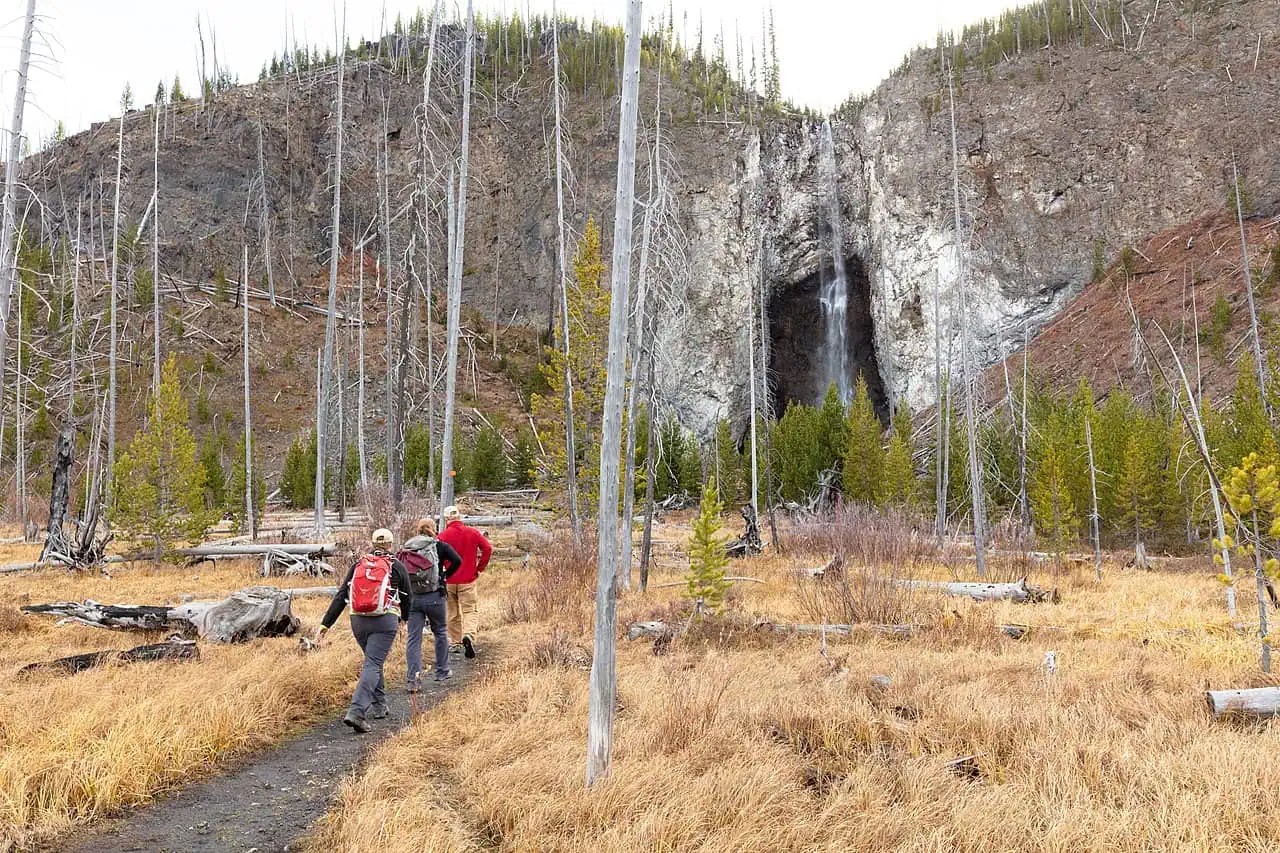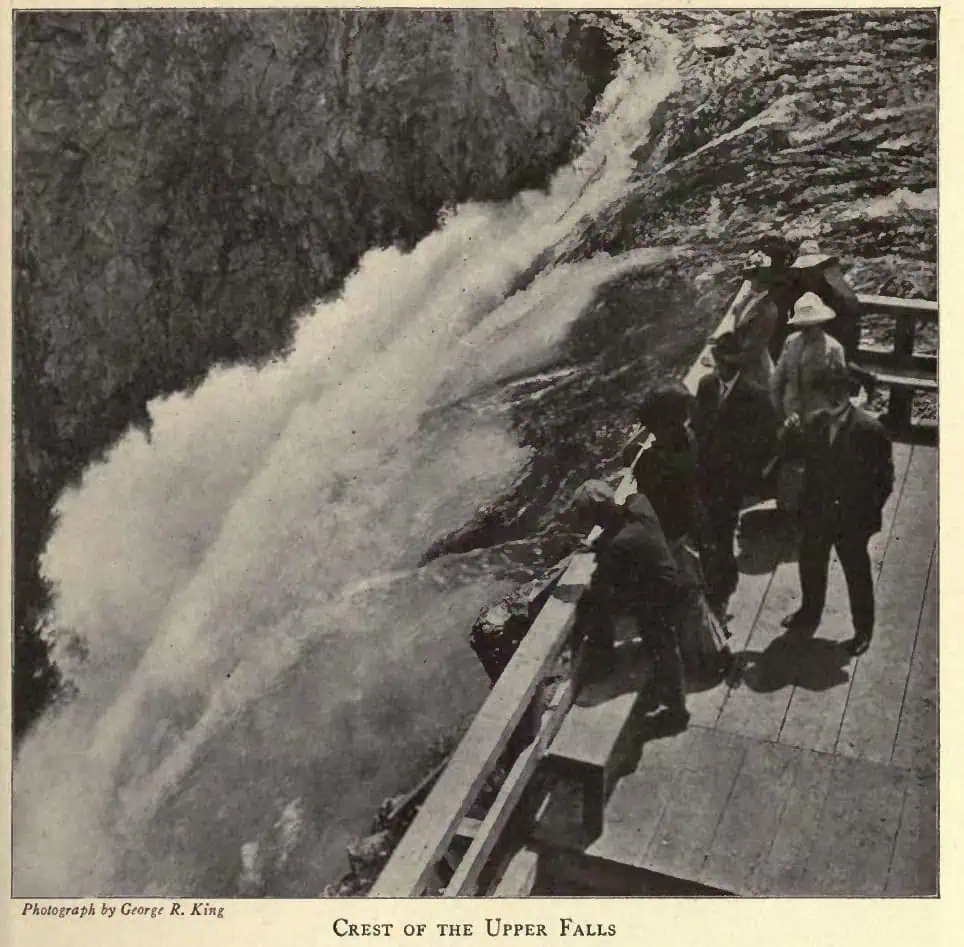Yellowstone is a wonderland of natural beauty, with geysers, hot springs, waterfalls, canyons, mountains, valleys and wildlife. There are countless scenic spots in this vast park, but some stand out more than others. Here are the five best overlooks in Yellowstone to admire the stunning landscapes, capture amazing photos and videos, and learn more about the history and geology of the park.
1. Grand Prismatic Overlook and Fairy Falls Trail
The Grand Prismatic Spring is the largest hot spring in the United States and the third largest in the world. It is famous for its vivid colors, which range from blue to green to orange to yellow, depending on the temperature and bacteria in the water. The spring is located in the Midway Geyser Basin, which also features other geothermal features such as the Excelsior Geyser Crater and the Turquoise Pool.
To get a bird’s eye view of the Grand Prismatic Spring and its rainbow-like hues, you need to hike to the Grand Prismatic Overlook. This is a 1.2-mile round-trip hike that starts from the Fairy Falls Trailhead, which is about 1 mile south of Midway Geyser Basin on Grand Loop Road. The trail climbs gradually through a forested area until it reaches a wooden boardwalk that leads to the overlook. From here, you can see the entire spring and its surroundings from above.
You can also continue on the Fairy Falls Trail for another 1.6 miles to reach the Fairy Falls, a 200-foot waterfall that cascades down a rocky cliff.
The best time to visit the Grand Prismatic Overlook is in the morning or evening, when the sun is low and the colors are more vibrant. You should also avoid windy days, as the steam from the spring can obscure your view. The best time of year to visit is in late spring or early summer, when the snow has melted and the wildflowers are blooming.
For the secrets to the extraordinary colors in the Grand Prismatic Spring, check out this short video from Smithsonian Channel’s “Aerial America.”

2. Artist Point in Grand Canyon of the Yellowstone
The Grand Canyon of the Yellowstone is one of the most spectacular sights in the park. It is a 20-mile-long canyon that has been carved by the Yellowstone River over millions of years. The canyon walls are made of yellow, orange and red rocks that contrast with the green pine trees and the blue sky. The canyon also features two impressive waterfalls: the Lower Falls and the Upper Falls.
One of the best places to see the canyon and the Lower Falls is from Artist Point. This is a viewpoint that is located on the south rim of the canyon, about 4 miles east of Canyon Village on South Rim Drive. Artist Point offers a panoramic view of the canyon and the 308-foot-tall Lower Falls, which is the tallest waterfall in the park. The viewpoint was named by Frank Jay Haynes, a photographer who visited it in 1883 and was inspired by its beauty.
The best time to visit Artist Point is in late morning or early afternoon, when the sun illuminates the canyon walls and creates a rainbow over the falls. You should also visit in late summer or early fall, when the foliage adds more color to the scene.
Check out this video from We’re in the Rockies for more on the Grand Canyon of the Yellowstone.
3. Mount Washburn
Mount Washburn is one of the highest peaks in Yellowstone, at 10,243 feet above sea level. It is also one of the most accessible mountains in the park, as there are two trails that lead to its summit. From the top, you can enjoy a 360-degree view of the park, including the Grand Tetons, the Absaroka Range, the Yellowstone Lake and the Hayden Valley.
There are two ways to hike to Mount Washburn: from Dunraven Pass or from Chittenden Road. The Dunraven Pass trailhead is located on Grand Loop Road, about 4 miles north of Canyon Village. This trail is 6 miles round-trip and climbs about 1,400 feet. The Chittenden Road trailhead is located on Chittenden Road, which branches off Grand Loop Road about 5 miles north of Canyon Village. This trail is 5 miles round-trip and climbs about 1,300 feet. Both trails are well-maintained and offer scenic views along the way.
The best time to hike to Mount Washburn is in the morning or evening, when the temperature is cooler and the wildlife is more active. You should also hike in late July or August, when the snow has cleared and the wildflowers are blooming. Be prepared for strong winds and sudden weather changes at the summit.
4. Observation Point Trail
The Observation Point Trail is a short but steep hike that leads to a viewpoint overlooking the Old Faithful Geyser and the Upper Geyser Basin. The trail starts from the Old Faithful Visitor Education Center, which is located near the Old Faithful Inn on Grand Loop Road. The trail is 1.1 miles round-trip and climbs about 160 feet.
The Observation Point Trail offers a unique perspective of the Old Faithful Geyser, which is the most famous geyser in the park and one of the most predictable. The geyser erupts about every 90 minutes, shooting water and steam up to 180 feet in the air. From Observation Point, you can see the geyser from above and avoid the crowds that gather around its base. You can also see other geysers and hot springs in the Upper Geyser Basin, such as Castle Geyser, Grand Geyser, and Morning Glory Pool.
The best time to hike to Observation Point is before or after an eruption of Old Faithful, so you can catch the next one from the viewpoint. You should also visit in late spring or early summer, when the snow has melted and the geysers are more active.
5. Brink of the Upper Falls
The Brink of the Upper Falls is a viewpoint that allows you to stand right at the edge of the Upper Falls of the Yellowstone, a 109-foot-tall waterfall that plunges into the Grand Canyon of the Yellowstone. The viewpoint is located on the north rim of the canyon, about 2 miles east of Canyon Village on North Rim Drive. The viewpoint is reached by a short but steep trail that descends about 100 feet.
The Brink of the Upper Falls offers a thrilling experience of the power and beauty of the waterfall. You can feel the spray and hear the roar of the water as it crashes down into the canyon. You can also see the rainbow that forms over the falls when the sun shines on it.
The best time to visit the Brink of the Upper Falls is in midday or afternoon, when the sun is behind you and creates the best lighting for photos and videos. You should also visit in late spring or early summer, when the water flow is at its peak and the falls are most impressive.

Top photo of Grand Prismatic Spring by Beate Dalbec

